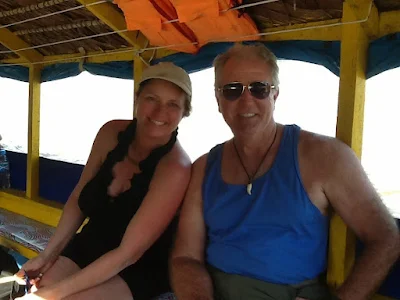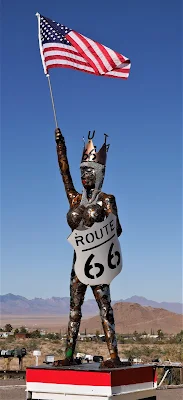I glanced over at Laureen, who was sipping coffee on our front porch.
“You know,” I started. “I’d like to head down the hill today and walk through some gardens.”
“We have plenty of land here for you to walk through and there are some pretty nasty sized weeds calling your name.”
Listening very attentively for a few seconds, I did not hear one weed beckoning me.
“How about a walk-about at the Huntington Library in San Marino?”
.JPG) |
| The Huntington Research Center |
In 1862, the U.S. Congress chartered the Central Pacific Railroad to build a railway eastward from Sacramento as part of the western extension of the Transcontinental Railroad.
Many in Congress, it is rumored, hmphed and hmphed while smoking big cigars and tipping their top hats to each other over this railroad charter.
“We do such wonderful things for our subjects,” one congressman may have said.
“I believe you meant to say, our constituents,” another congressman may have replied.
The first congressman nodded. “Why certainly that’s what I meant.”
Theodore Judah, an American civil engineer, had an idea to build the Central Pacific Railroad but needed financial support for such a huge project.
“Fat cats are needed for this railroad,” Judah may have pondered.
Soon, he had four wealthy individuals who wanted to get more wealthy by constructing a railroad which would be part of the tracks linking east to west.
Leland Stanford, Mark Hopkins, Charles Crocker, and Collins Potter Huntington ponied up the finances for Judah’s dream.
When the Central Pacific Railroad finally met up with the Union Pacific Railroad at Promontory Summit in Utah, the ‘Big 4’ realized they had done something truly special for the country – and were going to make a fortune.
Instead of taking weeks, or even months, to bring goods from the east to the west, it would now be only a matter of days to supply the needs of pioneers and growing towns along the route.
Shop owners were said to have danced in the streets with joy.
“By golly, that sarsaparilla will be here in no time. My customers will be bellied-up to the bar for that lip-smacking delicacy.”
But this article is not about the railroads, it is about Collis P. Huntington’s nephew, Henry E. Huntington who left a beautiful legacy in the town of San Marino, just southeast of Pasadena.
As a boy, Henry grew up hearing about his rich uncle and what he had accomplished in the railroad world, as well as other successful monetary ventures.
As it turned out, Henry went to work for Collis as an executive at the Southern Pacific, which had been the Central Pacific earlier. When Collis passed away in 1900, Henry assumed the leadership role with the Newport News Shipbuilding and Drydock Company in Virginia as well as other businesses which were under Collis’s control.
To say the least, Henry was becoming wealthy.
.JPG) |
| Henry E. Huntington |
In 1910, Henry divorced his first wife, Mary Alice Prentice Huntington, and in 1913 married his uncle’s widow, Arabella.
No judgement here, but it did shock the high society in San Francisco at the time.
“OMG, can you believe they got married?” one socialite asked another socialite.
“When I heard, it was simply LOL to me.”
The weather was nearly perfect for us to stroll the 207 acres which comprise the Huntington Library, Art Museum, and Botanical Gardens.
Over 130 of those acres are taken up the Botanical Gardens. That is a lot of walking in and out of the various gardens at the Huntington.
.JPG) |
| Laureen Beyer strolling one of the gardens |
There’s the Garden of Flowing Fragrance, the Chinese Garden, the Desert Garden, the Japanese Garden, the Rose Garden, the Children’s Garden, the Australian Garden, and some others I forgot to write down.
There are nearly 27,000 different types of plants on the grounds which include 16,000 various species. Must be considerable work for the staff of full-time gardeners to keep track of such numbers.
.JPG) |
| Lots of various trees at the Huntington |
“I think it was sixteen hundred and fifteen, but I suddenly had a coughing spell and lost track,” one gardener told another.
“Well, let’s start again, shall we? You know how the head gardener can be.”
It was relatively early in the morning when we arrived, which allowed Laureen and I to shoot through the gates and onto the grounds rather quickly.
Heading to the 16,000 square foot Rose Hills Foundation Conservatory for Botanical Science proved to us that a greenhouse that large may have its own weather system brewing.
The huge steel and glass building is home to three different habitats – a lowland tropical rain forest, a cloud forest, and a carnivorous bog.
It also sports a humidity that must be nearly 3,000 percent.
I was dripping sweat within seconds of entering the structure – Laureen was glistening.
“Holy Moly,” I said. “My eyeballs are fogged over.”
It was amazing what had been created for guests to experience. Huge towering plants dripping water onto other plants and tourists. A large pond was surrounded by portions of the rain forest. There were plaques everywhere describing this plant or that plant for the curious botanists.
“There is the Corpse Flower,” Laureen observed. “Want to take a closer look?”
“A closer look? Sure, it’s not a Venus Flytrap?”
I was more interested in studying the Amorphophallus titanium, or Stinky Plant in laymen’s terms. Research states that when this plant blooms it can clear a room out quicker than a pug with digestive issues.
I’m immature like that.
After spending nearly an hour looking at this plant or that plant, we exited into the late morning sun where a gentle breeze greeted us.
“That is refreshing,” Laureen said.
“Yeah, I think I dropped twenty pounds of water weight in there.”
As an entrepreneur, Henry invested in this and in that and along the way purchased great tracts of land. He purchased 500 acres in what was called the San Marino Ranch, where the library is now located, as well as other large parcels in Pasadena and Los Angeles.
Being the creator of the Pacific Electric Railway Company – the Red Car. Henry was able to amass more wealth by offering a 24/7 mode of transportation in and around the ever-growing city of Los Angeles. By 1910, his electric trolley system spanned over 1,300 miles with 20 streetcar lines and 1,250 trolleys.
Henry was responsible, along with other early developers, of creating the Southern California that we now recognize.
Huntington Beach, Huntington Park, Huntington Lake, Huntington Hospital, Henry E. Huntington Middle School, and Huntington Drive are just some of the places named after this man who had moved from Oneonta, New York to make California his permanent home.
Speaking of homes, the original home of the Huntington’s, located on the grounds happens to be more of a humongous mansion, now the art gallery.
The Gilded-Age abode was designed by Myron Hunt, along with the adjacent library built in 1919, also by Hunt. Other buildings were added during the following years including a tea house, a bowling building, billiard building, art gallery, a mausoleum, and other historical structures.
.JPG) |
| Just one of many beautiful buildings at the Huntington |
And I thought the few sheds on my property were impressive.
An interesting fact, the mausoleum located on the grounds was designed by John Russell Pope, who also designed the Jefferson Memorial in Washington D.C.
Arabella was quite the art lover and between she and her husband garnered an extremely large collection of masterpieces from around the world during their marriage.
.JPG) |
| John R Beyer standing beside one piece of art work |
A statement concerning Huntington stated the following, ‘far and away the greatest group of 18th century British portraits ever assembled by any one man.’
It was estimated during his lifetime the collection of art was worth 50 million dollars. Today it is valued at over 400 million.
Prior to Henry E. Huntington death in 1927 – Arabella had passed away three years earlier, a foundation had been formed and the acreage, including all the buildings and gardens were opened to the public in 1928.
Both, Henry, and Arabella wanted to give back to the community which had welcomed them with open arms. They are interred on the Huntington grounds.
We took our time wandering through the Huntington Art Gallery where wide marbled hallways and carpeted stairways greet the visitor leading them to room after room with walls hung with some of the most beautiful paintings in the world.
Thomas Gainsborough’s Blue Boy, Rogier van der Weyden’s Madonna and Child, Thomas Lawrence’s Pinkie, Mary Cassatt’s Breakfast in Bed, Andy Warhol’s Small Campbell’s Soup Can, and so many more to please the eye.
.JPG) |
| Gainsborough's Blue Boy dressed in blue |
There were sculptures, decorative art pieces, prints, furniture from around the world, huge tapestries depicting hunting or battle scenes, and so much more to take in.
Every object was impressive.
The day sped by quickly and soon early afternoon was upon us. It felt as though we had put many miles on our tired legs traipsing through the gardens and the art collections.
“I’m exhausted,” I said as we left the complex.
Laureen nodded. “In a good way?”
I smiled, “Yes.”
For more information: https://www.huntington.org/
.JPG)

.JPG)
.JPG)


.JPG)
.JPG)
.JPG)
.JPG)
.JPG)
.JPG)
.JPG)
.JPG)
.JPG)
.JPG)
.JPG)








































